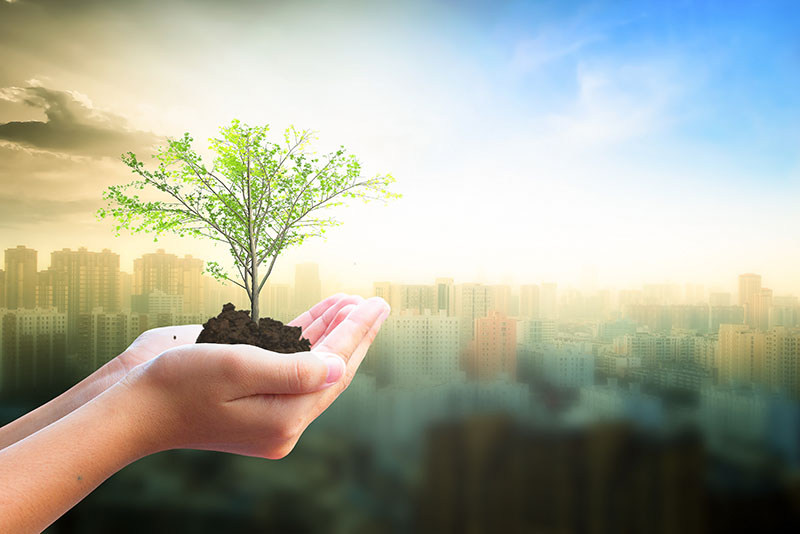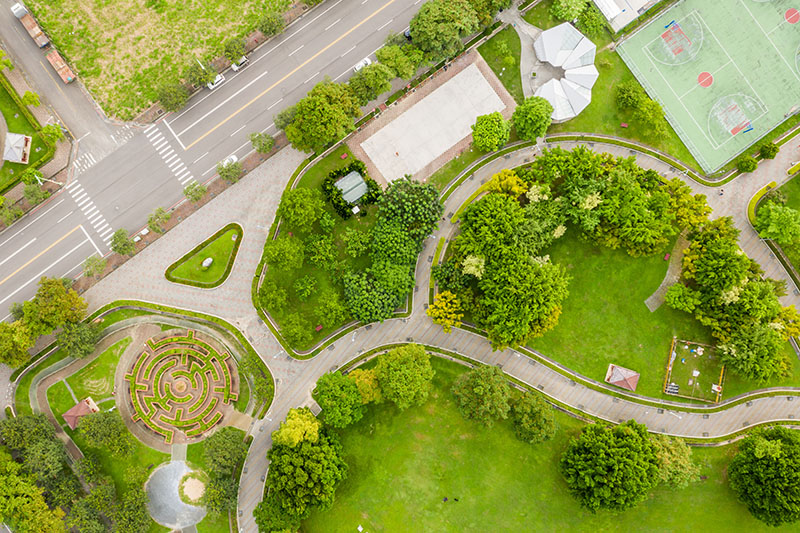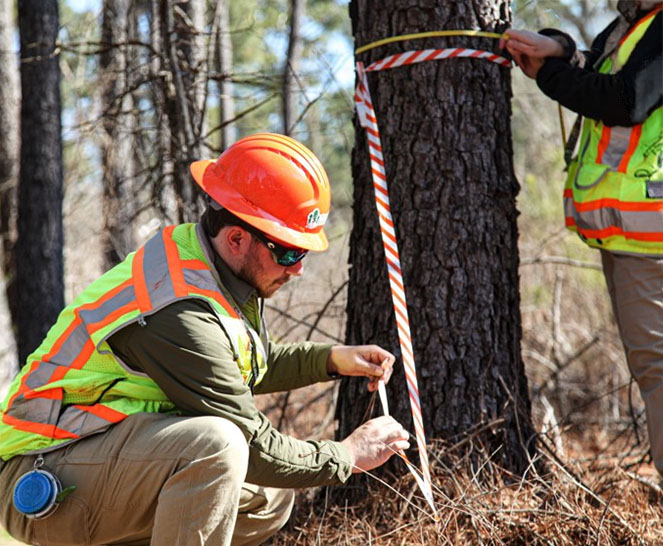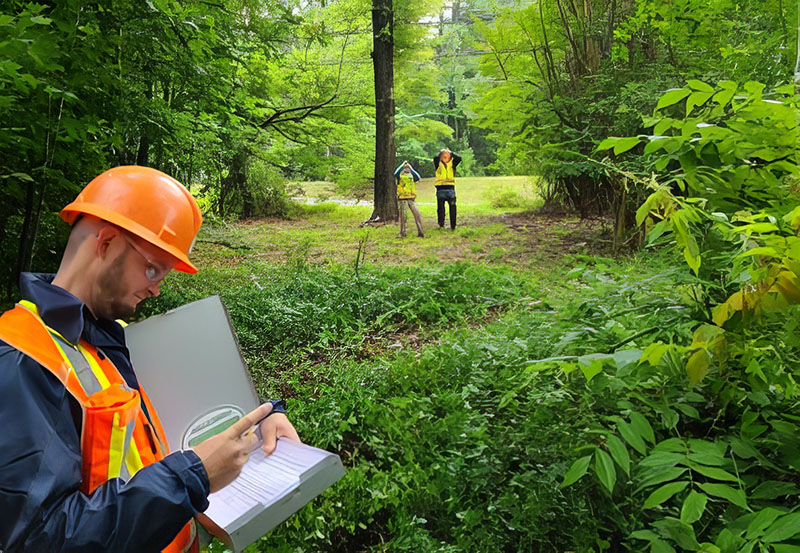Greening the Gray
Urban Tree Planting and the Evolution of Green Cities
Este es nuestro intento de convertir las historias en audio español usando Inteligencia Artificial. Aún así le recomendamos que reconfirme ciertas palabras clave y temas. ArborTIMES no garantiza ni se responsabiliza de la conversión del inglés al español de los relatos.

Urban landscapes present unique challenges and opportunities for tree planting, which is integral to creating sustainable and livable cities. As tree care professionals, understanding the dynamics of urban forestry is, of course, crucial for the successful integration of green spaces within city confines.
From planning to planting, there are quite a few natural and man-made factors that affect the location, species, and tactics used for the project. If successful, though, the result is an amplified urban environment and cohesive ecosystem.

A Brief History of Urban Tree Planting
Urban tree planting is not a novel concept but a deep-rooted practice that has evolved significantly over the centuries. Historically, rapid urbanization led to significant tree loss across our landscapes, prompting various movements to reintegrate nature into cityscapes.
Notable moments include the establishment of public parks in the 19th century and the Arbor Day foundation in 1872, which marked a pivotal moment in promoting tree planting in urban areas. Industry landmarks, such as the development of the first urban tree care standards, have paved the way for modern urban forestry practices.
These milestones highlight the progression of tree-planting initiatives and underscore the growing recognition of the importance of urban trees. In turn, urban forestry continues to enhance the quality of life and environmental health in densely populated areas over time.

Benefits of Urban Forestry
Urban forestry goes far beyond the simple act of planting trees. It is a strategic and holistic approach to managing the trees and green spaces within cities, yielding a wide range of benefits that impact the environment, economy, society, and wildlife.
As we explore the various contributions of urban forestry, it is evident that these advantages are both extensive and interconnected.

Environmental Benefits
One of the most significant environmental contributions of urban forestry is its role in combating the urban heat island effect. This phenomenon occurs when urban areas become significantly warmer than their rural surroundings as human activities, buildings, and pavement absorb and retain heat.
Urban trees play a crucial role in mitigating this effect by providing shade, which has been found to reduce temperatures by 5.4°F (3.06°C), on average. They also cool the area through a process known as evapotranspiration. The process in which water is absorbed by the roots and released as water vapor through the leaves. This in turn cools the surrounding air.
By lowering temperatures, trees reduce the need for energy-intensive air conditioning, leading to less energy consumption and lower greenhouse gas emissions.
Additionally, urban trees improve air quality by filtering out pollutants and sequestering carbon dioxide, contributing to a healthier urban environment.

Economic Benefits
The economic benefits of urban forestry are substantial and often underappreciated. Aesthetically speaking, trees enhance the appeal of neighborhoods, leading to increased property values.
Homes and businesses surrounded by well-maintained trees are considered more desirable, which can boost local real estate markets. Moreover, urban trees can attract businesses and tourists, contributing to the local economy.
Urban forestry also brings more jobs to urban areas. According to Arbor Day Foundation, urban forestry activities employ over 500,000 people.
Another significant economic benefit is the role trees play in stormwater management. By absorbing and filtering rainfall, trees reduce the burden on urban drainage systems, potentially saving cities millions of dollars in stormwater infrastructure costs.
This natural absorption process also helps prevent flooding and reduces the risk of water pollution, leading to long-term savings and a more resilient urban infrastructure.
At the end of the day, according to the U.S. Environmental Protection Agency, studies have shown that for every $1 spent on urban forestry, $5.60 was returned to the community.
Social Benefits
Urban trees are essential to the social fabric of cities, contributing to the well-being of residents in multiple ways. Green spaces created by urban forestry provide areas for recreation, relaxation, and community gatherings, fostering a sense of belonging and social cohesion.
These spaces serve as communal areas where people of all ages can connect with nature and each other, which is increasingly important in densely populated urban settings.
Moreover, properly designed trees and shrubs have been shown to reduce noise pollution by acting as natural sound barriers, creating quieter and more peaceful urban environments.
The presence of trees and green spaces also has a profound impact on mental health. Studies have shown that spending time in green spaces can lower stress levels, reduce anxiety, and even improve mood, contributing to the overall mental well-being of urban dwellers.
Wildlife Benefits
Perhaps most obviously, urban forestry is also vital for supporting biodiversity in cities. Trees and green spaces provide critical habitats for a wide range of wildlife, even in the most densely populated areas.
Birds, insects, and small mammals rely on urban trees for shelter, food, and breeding grounds, helping to maintain and enhance urban biodiversity. The presence of wildlife in cities also contributes to the ecological balance, supporting pollination, seed dispersal, and pest control.

Additionally, the preservation and creation of urban green spaces connect fragmented habitats, allowing wildlife to thrive and migrate within the urban landscape.
This not only enriches the urban ecosystem but also brings residents closer to nature, fostering a greater appreciation for the natural world within city boundaries.
Planning an Urban Tree Planting Project
The benefits of urban trees are plentiful, but the project’s success depends on whether those trees flourish and function properly in an urban setting.
That is why successful urban tree planting starts with thorough planning. It involves understanding the specific environmental conditions of the city and the needs of its residents.
Assessing the Urban Environment
Before any trees are planted, a detailed assessment of the urban environment is necessary. This includes analyzing soil conditions, available space, climate, and existing infrastructure to ensure that the right trees are planted in the right places.
According to Logan Scarborough, CEO of Plank Road Forestry (PRF) Specialists, a crucial part of site assessment has to do with the presence of utility lines in urban forestry.
“We look at the minimum approach distance [MAD] from a particular [utility] line. We don’t want a tree to be anywhere close to MAD,” he explained. “So, with that being said, we look at very low growing species for urban settings — low growing and slow growing species like American [dogwood] would be a great example.”
When planting urban trees, tree care professionals must also carefully consider whether the species has an aggressive root system that could potentially uplift sidewalks and disrupt surrounding infrastructure.
Choosing the right tree and proper placement is essential to prevent long-term damage and costly repairs in an urban setting.
Selecting Appropriate Tree Species
The selection of tree species for urban settings is pivotal. Native species are often preferred for their compatibility with local ecosystems and lower maintenance needs.
“Introducing non-native species into our environment and our habitat is normally not the right way to go,” Scarborough said. “Native species, in my opinion, are supposed to be here. It doesn’t matter if it’s in a yard or in the middle of a forest — that’s where they’re supposed to be.”

There is a long list of benefits when it comes to planting native trees in urban areas. On the flipside, there are some significant negatives when it comes to non-native species.
Scarborough says that one of the most pressing negatives of going non-native is some species’ tendencies to be severely aggressive, taking over the space.
“I had a professor years ago that said non-native means invasive,” he explained. “It’s a good warning of why you should stick to native species.”
Non-native tree species may also end up doing more harm than good to local ecosystems.
“It could have a detrimental effect on local wildlife or just no effect, whereas a native species might have a positive effect on local wildlife,” Scarborough said. “So, I always think native species is the route to go first.”
There are exceptions to the rule, though.
For example, non-native tree species may be necessary in highly altered urban environments where conditions do not favor native species.
The key is to balance ecological benefits with practical urban needs.

Ensuring Strong Roots for Urban Trees
Urban environments pose several challenges that can impede tree growth and survival. Each issue requires specific strategies to ensure that urban trees can thrive.
One of the most common obstacles faced in urban tree planting is limited planting space due to infrastructure, heat stress, pollution damage, and soil compaction.
Of course, the usual plant health care practices — such as spacing, staking, mulching, pest management, and more — are crucial to ensuring a successful urban landscape.
Just as crucial, if not more, is pruning.
Pruning is necessary to remove unhealthy branches, promote a tree’s structure and aesthetics, and prevent conflicts with urban infrastructure.
It’s also just as beneficial for the tree itself as it is for the surrounding cityscape.
“Having a solid understanding of proper pruning cuts, knowing what time of year to do that, understanding the species, what it can handle when it comes to pruning,” Scarborough explained.
“Those all need to be taken into account.”

The Bottom Line
Urban tree planting is a complex, yet rewarding endeavor that significantly contributes to the environmental, economic, and social fabric of cities. The strategic incorporation of trees into urban planning not only enhances the beauty and functionality of city landscapes, but also fosters a resilient urban ecosystem for future generations.
By choosing appropriate tree species and adhering to tree care industry standards and best practices, we can overcome the inherent challenges of urban environments.
.



LOVE IT